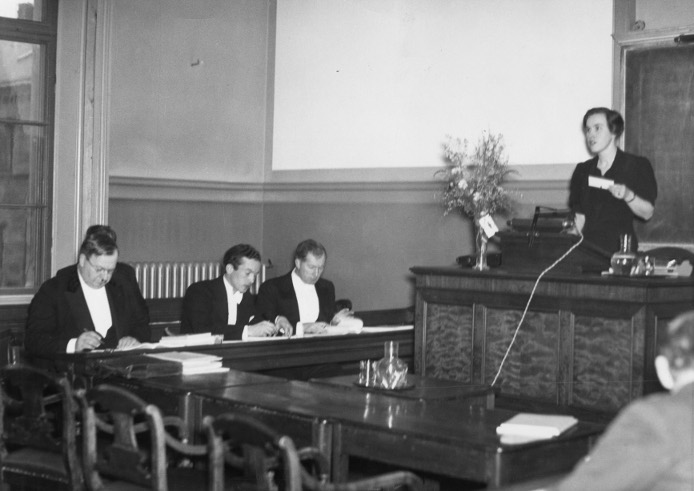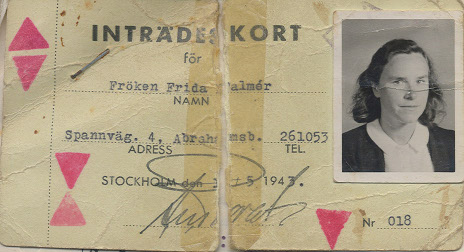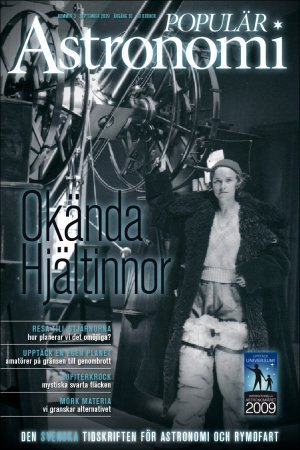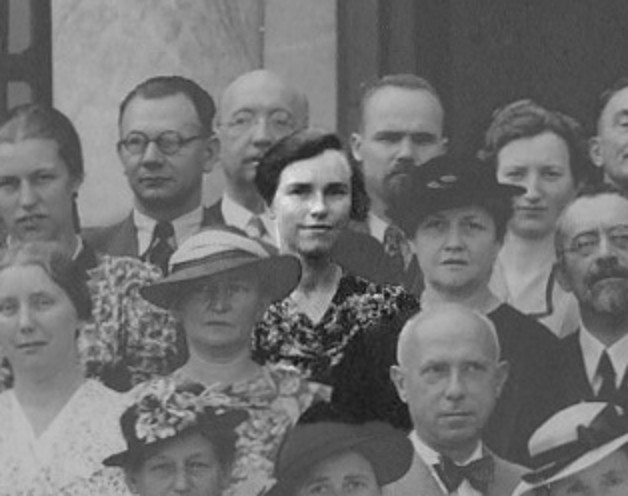 During Knut Lundmark's time as a professor in Lund, a number of researchers wrote their theses in astronomy, among them Frida Palmér (1905-1966), who became the country's first female Ph. D. in astronomy. Her speciality was irregular variable stars. In 1929, until the first years of World War II, Frida Palmér was connected to the department of Astronomy in Lund. Despite the support of Lundmark, she did not continue with her stellar research, mainlu due to World War II, which brought her to work for the FRA (National Defence Radio Establishment) and then as a physics lecturer in Halmstad.
During Knut Lundmark's time as a professor in Lund, a number of researchers wrote their theses in astronomy, among them Frida Palmér (1905-1966), who became the country's first female Ph. D. in astronomy. Her speciality was irregular variable stars. In 1929, until the first years of World War II, Frida Palmér was connected to the department of Astronomy in Lund. Despite the support of Lundmark, she did not continue with her stellar research, mainlu due to World War II, which brought her to work for the FRA (National Defence Radio Establishment) and then as a physics lecturer in Halmstad.
Right: Frida Palmér's attentive disputation in Lund on January 28, 1939. Lundmark to the left, her opponents M. Sc. Anders Reiz and Ph. D. N. Ambolt to the right. The photo was taken by legendary photographer Otto Ohm. Thanks to Peter Modie at Bildbyrån in Ljungbyhed, which made the unique photo available.
Right: A unique photo from Danzig, at present Gdansk, 1939 just a week before the outbreak of WWII - she attended Astronomische Gesellschaft with the board member Knut Lundmark and met with the German variable stars astronomer Margarethe Güssow (the lady to the upper left of Frida Palmér). Photo courtesy of Hilmer W Duerbeck via the archives of Astronomische Gesellschaft.
Right: A unique photo from Danzig, at present Gdansk, 1939 just a week before the outbreak of WWII - she attended Astronomische Gesellschaft with the board member Knut Lundmark and met with the German variable stars astronomer Margarethe Güssow (the lady to the upper left of Frida Palmér). Photo courtesy of Hilmer W Duerbeck via the archives of Astronomische Gesellschaft.
 Her time as a cryptographer in the forerunner of FRA is referred to as in Bengt Beckman's book ‘Svenska kryptobedrifter’ (‘Swedish cryptographic accomplishments’) 1996. (Her id-card to the right has been made available by the FRA.)
Her time as a cryptographer in the forerunner of FRA is referred to as in Bengt Beckman's book ‘Svenska kryptobedrifter’ (‘Swedish cryptographic accomplishments’) 1996. (Her id-card to the right has been made available by the FRA.)
Russian-speaking Frida Palmér worked her way up in the FRA organization as a system analyst for decoding Soviet marine signal messages in the Arctic Ocean, headed for the group 53g, received a good salary but never got a recognition from cryptographers like Gunnar Blom or Sven Wäsström, who considered her as a "star analyst" of small significance.
The highest in command, Commander Torgil Thorén, stated however in a service certificate issued in 1943 that she always "challenged rapid perceptiveness, energy and prominent sense of ordination" and that "she always embraced the work with interest and dutifulness, as well with an observance of impeccable behaviour and honourable habits." Frida Palmér was allowed to be engaged in other things during her spare time. She was a trusted employée and no mail censorship was applied on her behalf. When she left service in 1945, she only had to promise not to mention anything of what she did or knew.
 Frida Palmér was born in Blentarp, Scania, where she is buried. The tomb is handled by her former student Gunilla Lindberg and since some years even by Frida´s relatives. A memorial plate tells who Frida Palmér was and the grave is adorned with perennials in the shape of the Big Dipper.
Frida Palmér was born in Blentarp, Scania, where she is buried. The tomb is handled by her former student Gunilla Lindberg and since some years even by Frida´s relatives. A memorial plate tells who Frida Palmér was and the grave is adorned with perennials in the shape of the Big Dipper.
Reader's tips: More on Frida Palmér, written by Charlotte Helin, is available in Populär Astronomi nr 3 2010 (Swedish only). The article is illustrated with several unique photos.




